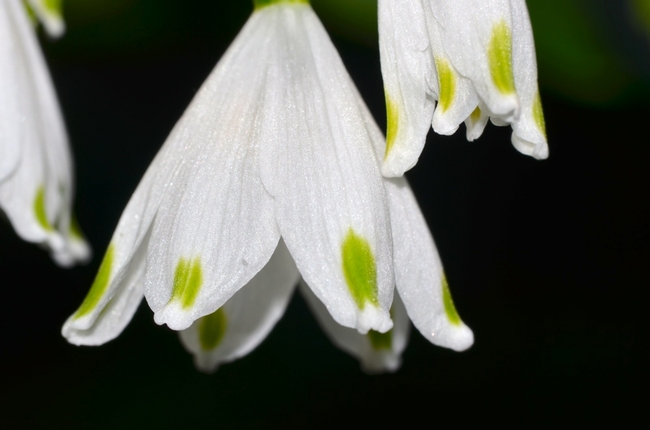There is a moment in mid-winter when I realize that the seasons are changing and that spring is near. This shouldn’t be a surprise, of course, because even if I ignore the wall calendar, there area certainly enough signs — the lengthening day and the striking cinnamon fragrance of my blooming Japanese flowering apricot are among them.
But for some reason, it’s the first flowering bulb that especially surprises and delights me. Each fall, I plant a few bulbs and then promptly forget what I’ve planted and where. A few months later, I’ll be startled when I nearly step on a cheerfully vivid yellow or purple crocus. “It’s already that time,” I’ll think, “time for spring and for everything to start blooming!” Well, maybe it’s not quite that time, but it’s certainly close.
But the cheery crocuses aren’t the only harbingers of spring. One of my favorite bulbs is a more subtle herald of the season — a more modest wallflower, really — the Spring Snowflake. I first discovered it on my parents’ property, which used to be part of an old Victorian estate. Initially, I scorned the plant, thinking it was the dreaded wild onion. But one day I took a closer look and realized that it was a different plant entirely.
The Spring Snowflake (Leucojum vernum) and Summer Snowflake (Leucojum aestivum) grow from bulbs. The plants have narrow, green leaves and small, bell-shaped, white flowers with a green (or sometimes yellow) spot on the tip of the petals (tepals, actually) borne on arching stems. The Spring Snowflake blooms in mid-winter, and contrary to its common name, the Summer Snowflake blooms just a bit later, in early Spring. The Spring Snowflake grows to about 6-8 inches tall, although it may get up to 14 inches, and the Summer Snowflake grows to about 24 inches tall. A cultivar of the Summer Snowflake, ‘Gravetye Giant,’ is generally taller and has larger flowers. It easily can be found for sale. Amazingly, the bulbs adapt well to clay soils! Frankly, I’m not sure which species I have in my yard, but given the time of year, my best bet is the Spring Snowflake. Their height, however, argues for calling them Summer Snowflakes. But really, it doesn’t matter to me.
I’m not one for garden fairies or sprites, but each time I look at my Snowflake flowers up close, I can’t help but think that the nodding, pearlescent bell-white flowers would make a perfect miniature ball gown skirt or bonnet for such creatures. The flowers really do merit a close examination to appreciate their beauty. Although they are much more subtle than those flashy crocuses, I am happy to see Snowflakes in my garden at this time of year.

